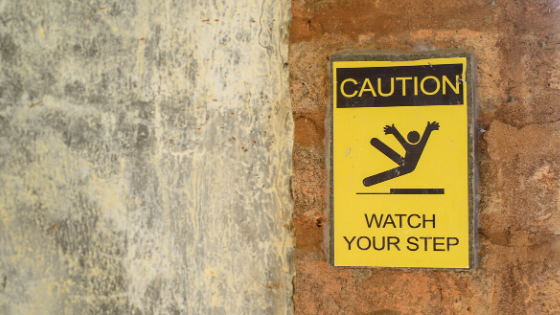Workplace injuries caused by like slips, trips, and falls are universal. The danger of becoming injured because of slippery, uneven, or cluttered thoroughfares is ubiquitous.
This danger is compounded when employees have to work in places where a fall could spell serious injury, such as in stairwells or while working at height. This makes it crucial for every workplace to have safety systems in place to help prevent these commonplace injuries.
One of the most important types of these systems is safety stair rails. With stairways and staircases often being the site of serious and even fatal injuries, it becomes integral to any company’s environmental health and safety planning. Here’s how safety stair rails and other related safety systems can help protect employees from harm while on the job.
What the Law Says About Stairwell Safety
Establishing a baseline for what health and safety stairs regulations need to be followed is essential. Generally, US federal law dictates that whenever there’s an unprotected side or edge of a stairway landing that is at least 4 feet above a lower that’s accessible to employees, that side or edge must have proper guarding installed. Employers a responsible for complying with these federal laws.
Additionally, each state in the Union can set its own safety standards, as long as they meet or exceed federal safety regulations. Therefore, it’s possible that a company residing in a particular state may have additional requirements they must meet, whereas a company in a neighboring state may not. Be sure to check state and local safety regulations to discover any specific requirements that apply to you.
Other Employer Stair Safety Responsibilities
Employers have additional responsibilities for ensuring workplace stairways are safe that go above and beyond meeting safety stair rail requirements. Keeping the entire workplace safe is squarely on the shoulders of business owners, and that includes policing stairwells and stairways in the following ways:
- Regular inspections for irregularities. Loose carpets and rugs, loose handrails, spills, grease, holes, corrosion, and missing or damaged steps all need to be rectified immediately.
- Adequate lighting. Even in situations where stairways are in excellent shape, dimly-lit stairs are a danger to anyone who is traversing them. Keep these areas illuminated properly by replacing bulbs immediately when they are burned out and ensuring there’s enough lighting in general.
- Platform safety. When your stairways have platforms or landings, these areas need to be kept clear and unobstructed by dirt, debris, or clutter. Doors that lead to these platforms should swing open in directions that won’t cause someone standing on the other side of the door to be placed in danger.
How Do Handrails on Stairs Help Keep You Safe?
The main objective of a handrail is to provide a secure grip for individuals going up or down stairs and walking on raised surfaces. They help to ensure balance, support, and fall prevention. Installing proper stair rails wherever required is indeed a key component of preventing slips, trips, and falls at work, but employers need to do more than simply meet any state and federal requirements. It’s also crucial to ensure your workers follow effective general stair safety protocols while at work, as doing so will limit the chances of accidents occurring.
It may seem a simple thing to traverse a set of stairs, but keep in mind that employees are often doing more than one thing at a time as they go about their duties. Workers may be distracted when walking or standing on landings, leading to doors that lead to or from stairways, or carrying loads up and down stairs. Therefore, employees should be trained on the following stair safety procedures:
Use handrails. Whether ascending or descending, always keep one hand on the handrail for stability.
- Be environmentally aware. For exterior stairways, exert caution in environmental conditions that could make stairs more dangerous, such as rain, snow, or ice accumulation.
- Keep stairs clean. Anything that could cause steps to become slippery, whether these stairs are on the outside or the inside of a work building, needs to be removed. This includes dirt, debris, and spills.
- No storage. Stairways or stair landings should never be used to store anything, even if they will be used temporarily. Anything stored in this manner poses dozens of risks to employees attempting to traverse those stairs.
- Move slowly and safely. When ascending or descending stairways, always take one step at a time. Skipping steps might cause an employee to traverse the stairway more quickly but creates an additional risk of injury through falls.
- Don’t carry heavy loads. Carrying anything that can’t be held safely in one hand while traversing a stairway is inherently dangerous, as it can obscure an employee’s field of view and prevent them from gripping the handrail.
- Avoid distractions. Employees should never split their attention while ascending or descending a stairway. This includes looking at their phone, reading a newspaper, or anything else that could lead to an accident or injury.
- Report issues immediately. If there are spills on stairways or platforms, if there is other debris or detritus, if there is damaged infrastructure that needs repairing, or if there’s insufficient lighting, employees need to report these issues promptly so they can be addressed.
The Final Word on Stairway Safety in the Workplace
Keeping an entire facility safe can be a major challenge, especially for employers that already have so much on their plate. Instituting a robust and comprehensive maintenance reporting system and ensuring employees comply with their safety responsibilities helps bridge the gap between the responsibilities of a business owner and their capabilities.
In this case, the use of compliance management software to ensure all safety checks and maintenance orders are completed regularly can help your company keep its stairways clean, safe, and well-lit. This, plus ensuring you meet all your safety stair railing responsibilities, will keep your employees safer while they’re on the job.
